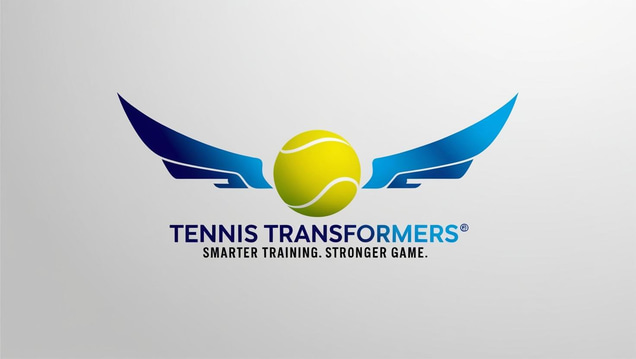Improve Your Tennis Skills and Overcome Frustration
Are you frustrated with your tennis game? Discover effective tennis improvement advice to identify what's holding you back and make the necessary enhancements to elevate your skills on the court.
TENNIS TALK
3/3/20253 min read


What Holds Tennis Players Back From Making Progress – And How to Break Through
Tennis is a sport that demands technical skill, physical fitness, mental strength, and strategic thinking — all at once. Whether you're a recreational player or an aspiring professional, the path to improvement is rarely smooth. Many players plateau despite hours on court. The key to progress lies in understanding the most common factors holding players back and knowing how to address them.
1. Lack of Purposeful Practice
One of the biggest reasons players struggle to improve is practicing without clear goals. Many hit endless balls or play sets without specific focus, hoping improvement will come naturally. While volume matters, mindless repetition rarely leads to breakthroughs.
What to do:
Set clear, measurable goals for each session — for example, improving first-serve percentage or adding more topspin to your forehand.
Track progress over time and make adjustments as needed.
Work with a coach to design structured sessions, balancing technical work, point play, and fitness.
2. Technical Flaws Ignored or Unaddressed
Many players develop strokes that are "good enough" for their level, but those technical flaws become barriers as they progress. Small inefficiencies in grip, footwork, or swing paths limit power, consistency, and adaptability.
What to do:
Seek regular technical feedback, even if you're an advanced player.
Use video analysis to review your strokes and compare them with professional benchmarks.
Be willing to make short-term sacrifices in match play to overhaul flawed technique — it’s uncomfortable but necessary for long-term growth.
3. Mental Weakness and Lack of Resilience
Tennis is a game of constant problem-solving, with momentum shifts and emotional swings baked into every match. Many players lack the ability to manage nerves, stay focused after errors, or stick to their game plan under pressure. Mental fragility is one of the biggest reasons talented players fail to progress.
What to do:
Develop pre-point routines to anchor your focus.
Learn how to reset after mistakes with breathing techniques or positive self-talk.
Practice playing under pressure by simulating high-stakes situations in training — tie-break drills, penalty points, or playing with consequences.
4. Inadequate Fitness and Movement
Tennis requires explosive speed, endurance, and agility, but many players neglect their off-court conditioning. Poor fitness leads to sluggish movement, late contact points, and an increased risk of injury, all of which cap your potential.
What to do:
Prioritize strength training, mobility work, and cardiovascular fitness.
Incorporate tennis-specific drills that improve lateral movement, recovery speed, and balance.
Recognize that even small gains in fitness translate to better court positioning and cleaner ball-striking.
5. Poor Tactical Awareness
Many players focus on hitting better strokes, but neglect the strategy side of the game. Knowing how to construct points, exploit opponents’ weaknesses, and adjust tactics mid-match separates good players from great ones.
What to do:
Study match footage — both your own and professional matches — to better understand patterns of play.
Learn how to assess your opponent’s strengths and weaknesses quickly.
Work with a coach to develop game plans suited to different types of opponents, conditions, and surfaces.
6. Fear of Losing and Playing Safe
A surprising number of players, even at competitive levels, struggle to play with freedom. They fear missing shots or losing matches, which leads to tentative play. This defensive mindset stifles development and keeps players from discovering their true potential.
What to do:
Embrace mistakes as part of the learning process.
Focus on long-term improvement over short-term results.
Develop a playing style that matches your personality — some players thrive on aggression, others on consistency — but avoid retreating into passivity under pressure.
7. Lack of Consistent Coaching and Feedback
Players often go through long periods without meaningful coaching, either because of cost, time constraints, or complacency. Without regular feedback, bad habits creep in, and players lose their sense of progression.
What to do:
Seek out quality coaching, even if only for occasional tune-ups.
Find a practice partner or mentor who can offer constructive feedback.
Record matches and training sessions to self-analyze between formal coaching sessions.
The Path Forward
Ultimately, progress in tennis requires players to take ownership of their development. That means becoming a student of the game, seeking honest feedback, and embracing discomfort. Improvement isn’t just about hitting better shots — it’s about building habits, mindsets, and training environments that support long-term growth.
The players who improve the fastest are those who welcome challenges, see mistakes as stepping stones, and blend technical work with mental and physical training. When you approach your tennis development with purpose, curiosity, and resilience, the limits to your progress begin to disappear.
In short: Train smart. Welcome discomfort. Seek feedback. Own your game. That’s the formula for real progress.
©2025 Tennis Transformers. All rights reserved
Disclosure
This website contains affiliate links. If you purchase through these links I may earn a small commission at no extra cost to you. I only recommend products I believe add value to you. This helps support my work and allows me to continue providing valuable content. Thank you for your support!
